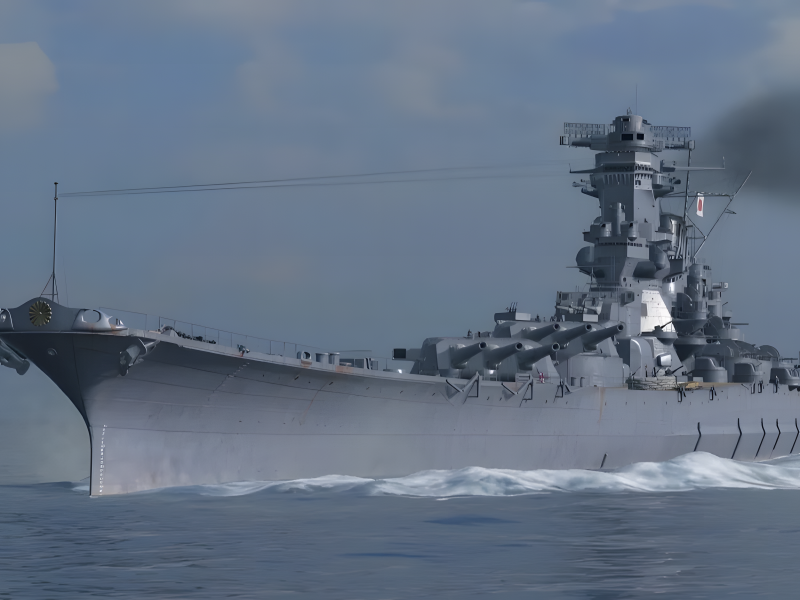Top 10 Largest Ships in the World
Advertisement
6 Battleship Yamato, Japan, 263 meters in length

Advertisement
The Yamato, a marvel of Japanese naval engineering and the lead ship of her class, stood as the epitome of battleship design during World War II. Measuring an awe-inspiring 263 meters in length, the Yamato was not only the largest battleship ever constructed but also represented the pinnacle of the "big gun" naval philosophy. Commissioned in 1941, this leviathan of the seas was shrouded in secrecy during its construction, with its true specifications remaining unknown to Japan's allies and enemies alike until after the war.
The Yamato's most distinctive feature was its main armament: nine 46 cm (18.1-inch) Type 94 guns, the largest naval guns ever mounted on a warship. These massive weapons could fire 1,460 kg (3,220 lb) shells over 42 kilometers (26 miles), giving the Yamato unparalleled firepower. The ship's armor was equally impressive, with a main belt thickness of up to 410 mm (16.1 inches), designed to withstand hits from the heaviest naval guns of its time. This combination of offensive and defensive capabilities made the Yamato a floating fortress, embodying Japan's aspirations for naval supremacy in the Pacific.
Despite its formidable specifications, the Yamato's combat career was relatively limited. The shift towards carrier-based naval warfare in World War II meant that battleships were increasingly vulnerable to air attacks. The Yamato primarily served as a flagship and deterrent, participating in the Battle of the Philippine Sea and the Battle of Leyte Gulf. Its most famous—and final—action came during Operation Ten-Go in April 1945, a suicide mission to defend Okinawa. In this last sortie, the Yamato was sunk by overwhelming American air power, highlighting the changing nature of naval warfare.
The Yamato's construction and operation strained Japan's wartime resources significantly. Its massive size required extensive dockyard facilities, and its fuel consumption was enormous, a critical factor given Japan's limited oil supplies during the war. The ship's sinking, along with several other vessels, resulted in the loss of over 4,000 Japanese sailors, marking a tragic end to what was once considered the ultimate expression of naval power.
In Japanese culture, the Yamato has become a symbol of both the nation's technological prowess and the futility of war. Its name, taken from an ancient term for Japan, imbued the ship with deep cultural significance. The battleship has been memorialized in numerous books, films, and anime series, ensuring its place in popular imagination long after its demise. Today, the wreck of the Yamato lies at the bottom of the East China Sea, a silent testament to a bygone era of naval warfare and a poignant reminder of the human cost of conflict.
Advertisement
You May Like

